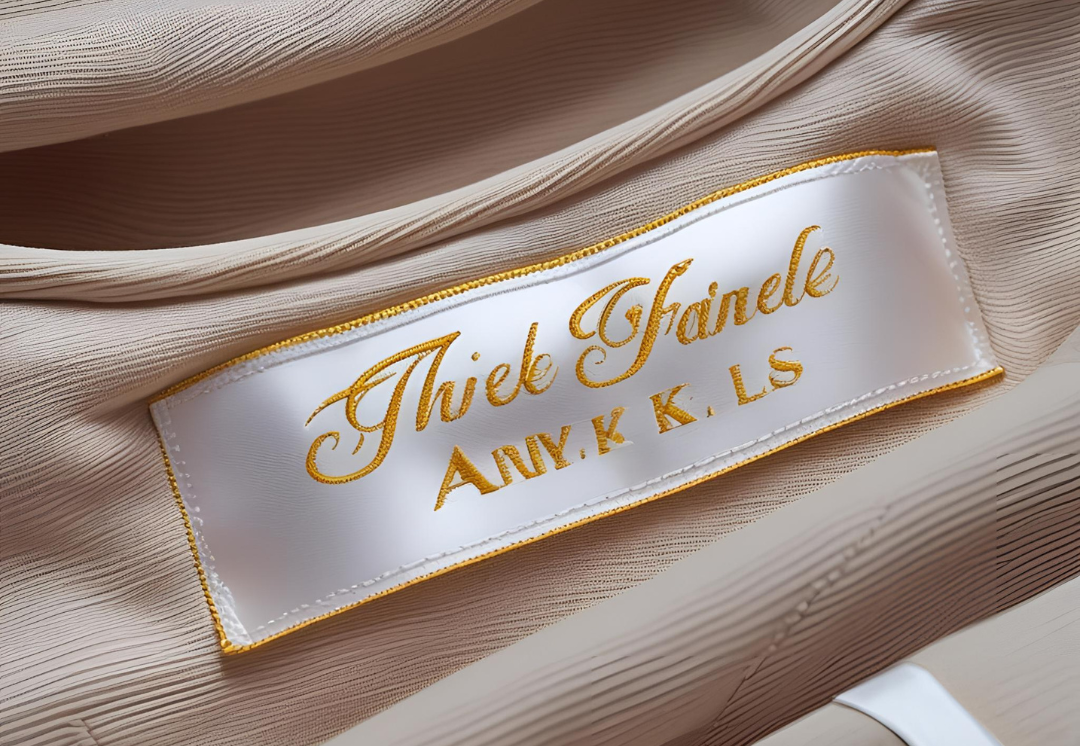Labels might seem like just a small piece of fabric, but they do a lot. Not Only do they show your brand, but they also provide important care instructions. Moreover, they can even impact how comfortable the garment feels. The good news is, you don’t have to spend too much to get quality labels. With the right choices, by using Satin Printed labels, you can save money and still get excellent results.
Let’s explore why printed labels are so important. At the same time, let’s understand how you can cut costs without cutting quality.
Why Printed Labels Matter in Garments
Printed labels are more than just tags inside your clothes. As they represent your brand, give important information, and affect the customer experience.
1. Labels Help Build Your Brand
Think about your favorite clothing brands. One thing they all have in common is clean, well-designed labels. A printed label with your brand name, logo, or tagline shows professionalism. Satin printed labels especially give a shiny, smooth finish that looks premium and leaves a great impression on customers.
2. Satin Printed Labels Affect Comfort
Labels are usually in direct contact with the skin. If they are rough, itchy, or stiff, the wearer might feel uncomfortable. This can lead to negative reviews or returns. In contrast to this, Satin printed labels are smooth and soft, making them perfect for clothes that touch the skin directly—like undergarments, kidswear, and T-shirts.
3. Labels Give Legal and Care Information
In many countries, it’s a legal rule to include certain information on labels. This includes size, fabric composition, country of origin, and wash care instructions. A printed satin label with clear text ensures customers know how to take care of the garment properly. This also prevents misuse or damage to the clothes.
4. Labels Build Trust
When customers see a neat, well-made label, they feel confident in your product. It shows that your brand pays attention to detail. And in business, details matter. Thus, A good label can help you stand out in a crowded market and earn repeat buyers.
Why You Should Save Smartly on Satin Printed Labels
As we know, it’s natural to want to cut costs in garment production. Labels might seem like a small thing, but they can add up. If you’re producing thousands of garments, even saving ₹1 per label can lead to big savings over time.
But cutting costs the wrong way—by using low-quality materials or skipping important details—can harm your brand. That’s why it’s important to save smartly.
This is where satin printed labels come in. They offer the perfect balance between price and quality.
What Are Satin Printed Labels?
Satin Printed labels are made from a smooth, shiny ribbon-like material. The text and graphics are printed onto the surface using heat transfer, screen printing, or digital methods. Therefore, these labels are flexible, soft, and give a luxurious feel without being too expensive.
Satin labels are used in many types of clothing, from high-end fashion to everyday wear. They’re especially popular in garments that are worn close to the skin, because they are soft and non-irritating.
Why Garment Manufacturers Choose Satin Printed Labels
Here are some clear reasons why satin printed labels are a top choice in the garment industry:
- Soft on Skin: They’re very comfortable, even for babies or people with sensitive skin.
- Great Print Quality: Text and images appear clean, sharp, and easy to read.
- Affordable Satin Printed Labels: Satin labels cost less than taffeta woven labels, especially when ordered in bulk.
- Quick Production: They can be produced faster than some other types of labels.
- Flexible Sizes: Available in various widths and lengths to fit different garment types.
Example: Why Kidswear Brands Prefer Satin Labels
Children have sensitive skin. Any rough edge or scratchy tag can cause discomfort or even skin reactions. That’s why most kidswear manufacturers go for satin printed labels. Not only are they safe and soft, but we can also print with fun colors and cute branding that appeals to both kids and parents.
How Satin Labels Build Brand Trust
Customers make quick decisions based on small things. A well-printed satin label can help your product appear more professional and trustworthy.
- First Impressions Count: A neat, shiny label can impress the customer even before they try on the garment.
- Comfort Keeps Customers Coming Back: People remember how a product made them feel. Comfortable garments with soft labels lead to happier customers and repeat sales.
- Consistency Builds Loyalty: If your labels are always top-quality, customers will trust your brand more. They’ll expect great service and comfort with every purchase.
Real-Life Scenario: Which Shirt Would You Pick?
For example you’re shopping for a shirt. You find two shirts that look almost the same and cost the same. One has a satin printed label with clear branding, wash care info, and a soft feel. The other has a stiff label with faded text and rough edges. Which one would you trust more? The answer is easy—the one with the better label.
Who Should Use Satin Labels?
Whether you’re just starting out or already running a medium-sized business, satin printed labels can fit your needs.
- For Startups: Satin labels help small brands look professional without spending too much. You can order smaller batches and still get good pricing.
- For Mid-Sized Brands: If you’re growing your garment line, satin labels offer an affordable way to maintain quality across different products.
- Even for Luxury Brands: Many high-end brands use satin for inner labels while keeping woven labels for brand tags. It gives comfort where needed and keeps production costs reasonable.
Final Thoughts
Satin Printed Labels are more than just fabric tags—they’re a key part of your brand’s story. Firstly, they help you stand out, follow rules, and connect with customers. The other good news is, you don’t have to spend a lot to get great labels. In short, by using satin printed labels, you can save money and still get soft, clear, and reliable tags for your garments.
In the next part of this blog series, we’ll dive deeper into what really makes labels expensive—and how to reduce those costs without making sacrifices.



Leave a reply